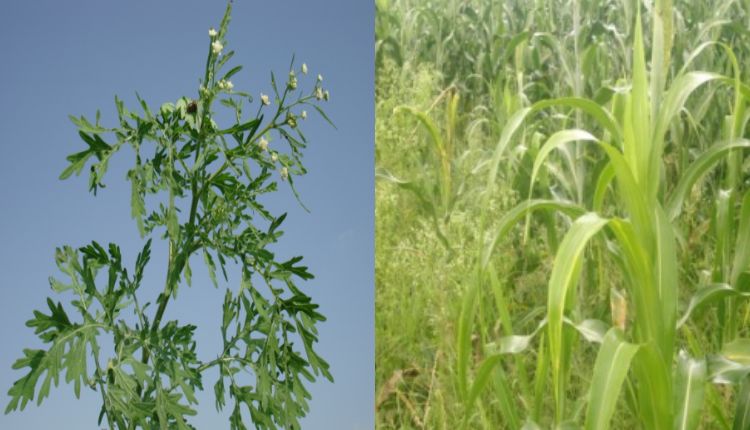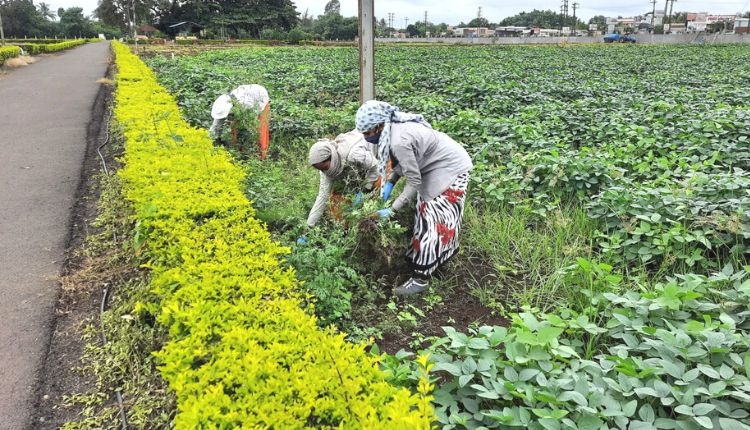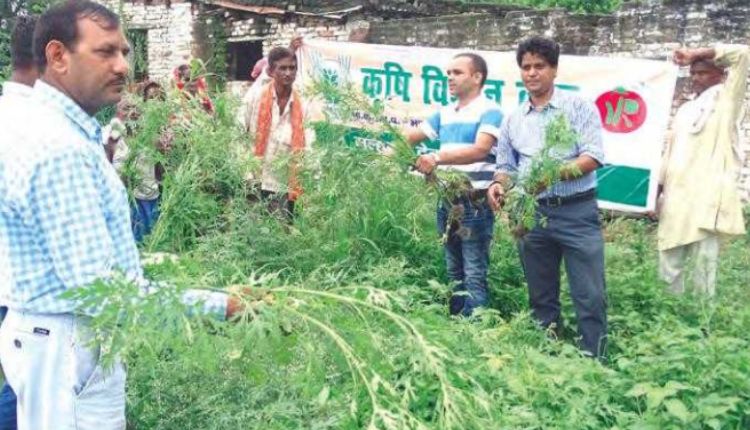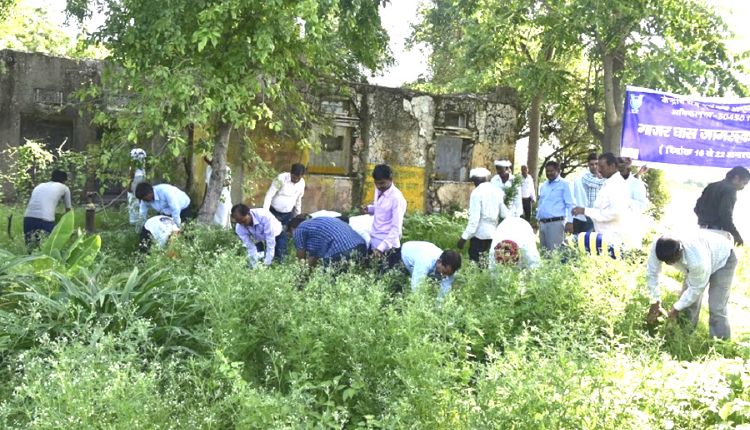Carrot Grass: Quickly destroy this worst enemy of soil and farmers
Use carrot grass to make compost and other products
Scientists have found the biggest enemy of soil ‘carrot grass’ to be destructive for the earth. Be it animal or plant, carrot grass is dangerous for the entire fauna, biodiversity and environment. So, wherever you see carrot grass, village or city, take the initiative to destroy its poisonous plants with full force, as it spreads aggressively and secretes poisonous chemicals that make the land barren.
Kisan of India, through its thousands of articles and audio-video presentations, has been telling the farmers what to do, why, when and how to increase the income from farming. We have been warning the farmers about all the dangers, diseases and harmful organisms present in the path of advanced farming. Continuing the same sequence, in the current Sunday special, we will talk in detail about the biggest enemy of the soil ‘Carrot Grass’. Scientists have given it the status of a destructive canker or wound for the entire biodiversity of the earth. Therefore, wherever you see carrot grass, be it in the village or the city, immediately take the initiative to destroy its poisonous plants with all your might.

Why is carrot grass destructive?
There is an outbreak of poisonous weed, carrot grass, in about 20 countries of the world. It spreads aggressively and secretes toxic chemicals that make the land barren. It is an intruder plant to India. It grows rapidly in all types of environments. It is believed that the microscopic seeds of carrot grass entered India by hiding in wheat imported from America or Canada.
It was first seen in the country in 1955 in Pune. So far, it has established its roots in the rural and urban areas of the country in the agricultural land, vacant government land along the railway tracks, colleges-hospitals, playgrounds, roadside vacant places in such a way that now it is spread in an area of 35 million hectares.

Carrot grass is fatal for everyone
Agricultural scientists of ICAR believe that 40 to 80 percent of the production of crops is getting affected due to carrot grass. Be it animal or plant, carrot grass is dangerous for the entire fauna, biodiversity and environment. Carrot grass, due to its aggressive expansion ability, kills every crop and other useful vegetation. That is why it is necessary to eliminate it on a war footing.
Carrot grass grows throughout the year when given a favourable environment. In addition to the release of toxic chemicals, the ability to suck up nutrients and moisture from the soil is also manifold in carrot grass. Carrot grass outperforms all other crops in competition for nutrition from the soil. Due to such coercive exploitation of soil, it becomes barren. Carrot grass badly affects the production of almost every crop during the destruction of the land. Due to the high cost of its prevention, the cost of cultivation increases and the farmers suffer a lot.

Skin diseases
Carrot grass toxin has been observed on germination and growth of paddy, jowar, maize, soybean, pea, sesame, castor, sugarcane, millet, groundnut, vegetables and fruit crops. It affects the development of root glands in leguminous crops. This reduces the activity of nitrogen fixing bacteria. Carrot grass pollen grains collect on vegetable plants like eggplant, pepper, tomato, etc., affect their pollination, germination and fruit formation and cause chlorophyll deficiency in leaves and deformities in flowers.
Carrot grass causes skin diseases like dermatitis, eczema, allergies, asthma and fever in humans. If it is too much, it can even lead to the death of a person. This poisonous weed is also very harmful for animals. If the animal eats it, it gets ulcers in mouth, spots appear on the skin and watery eyes and excess saliva starts flowing from the mouth. By eating it, bitterness starts coming in the milk of milch animals. Feeding carrot grass in large quantities to the animal can also lead to its death.
What is the identity of carrot grass?
There are 20 species of carrot grass. It is about 1 meter high and exotic weed with white flowers. They are found in America, Mexico, West Indies, India, China, Nepal, Vietnam and Australia. In India, it is spread over various parts of Jammu and Kashmir, Himachal Pradesh, Delhi, Haryana, Rajasthan, Maharashtra, Bihar, Uttar Pradesh, Madhya Pradesh, Odisha, West Bengal, Andhra Pradesh, Telangana, Karnataka, Tamil Nadu, Arunachal Pradesh and Nagaland.
Its botanical name is Parthenium hysterophorus. It is also called Congress grass, white cap, bright moonlight, Gandhi booti, Chidiya bari etc. Its leaves are like carrot or chrysanthemum leaves. Its stem is hairy and highly branched. Its accumulation is more during the rainy season. Its life cycle is about 4 months but in favourable environment it remains green throughout the year. Each plant of carrot grass produces 5000 to 25000 microscopic seeds. Its seeds lie in the ground for years and germinate easily after getting sunlight and moisture.
How is carrot grass propagated?
Crops reach and flourish from one place to another by means of seeds, irrigation, fertilizers, wind, rain, threshing and transport. If there is an infestation of carrot grass around a crop and if the harvesting and threshing of the crop is not done carefully, then the seeds of carrot grass reach other fields through production. Carrot grass is abundantly seen on the banks of canals. The seeds of carrot grass grown in canals or drains fall there after ripening and reach the fields with irrigation water.
Similarly, when farmers make manure from many weeds, then the seeds of carrot grass reach the fields by hiding in them. During the grazing of animals in the pasture affected by this grass, the seeds of carrot grass also reach from one place to another through them. The gust of strong wind also carries the tiny and light seeds of carrot grass from anywhere. After threshing the crop affected by carrot grass, if the machine is not cleaned properly, there is a possibility of its seeds mixing with other seeds.
How to get rid of Carrot Grass?
Community effort is essential to keep the soil free of carrot grass. Where carrot grass is seen growing, it should be completely destroyed by running a community campaign. The best way to completely destroy carrot grass is to destroy its plants by rooting them before flowering in the rainy season. A hoe can be used to uproot the plants. If the plant is to be pulled from the ground by hand, then gloves must be worn while doing so. So that no part of the body comes in contact with it.

Biological control
After harvesting the crop during summer, two to three plowing of the vacant land should be done by cultivator. So that all weeds including seeds are completely destroyed. The spread and growth of carrot grass can also be stopped by planting marigold plants around the house and in protected areas. It can also be prevented by a pest called ‘Mexican Beetle’, which eats only carrot grass and eats the whole plant for one and a half to two months. Therefore, where the infestation of carrot grass is high, 500 to 1000 adult beetles should be released. The reproductive potential of this beetle is immense. Their population is increasing very rapidly. This makes carrot grass a sustainable solution.
Chemical control: Carrot grass can also be eradicated by the use of weedicides. In the early stage of growth of carrot grass in empty fields, when the plants have 2-3 leaves, then make a solution of glyphosate 1.5 to 2.0 percent or Metribuzin 0.3 to 0.5 percent or 2.4-D 0.5 kg of active ingredient in 500-600 litres of water and should be sprayed before flowering. While spraying, keep in mind that the plants should be thoroughly soaked with the solution, otherwise favourable results will not be achieved.
Uses of Carrot grass
Carrot grass can be used in the manufacture of many insecticides, bactericides and weedicides. Various types of paper can be prepared from its pulp. When mixed with cow dung, it can be used for biogas production. Similarly, if farmers use carrot grass, which destroys crops and soil and is enemy of all animals, in making compost or vermicompost, then it can also become an income-enhancing friend.
Contact Details – If farmers want to share any valuable information or experiences related to farming, they can connect with us via phone or whatsapp at 9599273766 or you can write to us at “[email protected]”. Through Kisan of India, we will convey your message to the people, because we believe that if the farmers are advanced then the country is happy.



